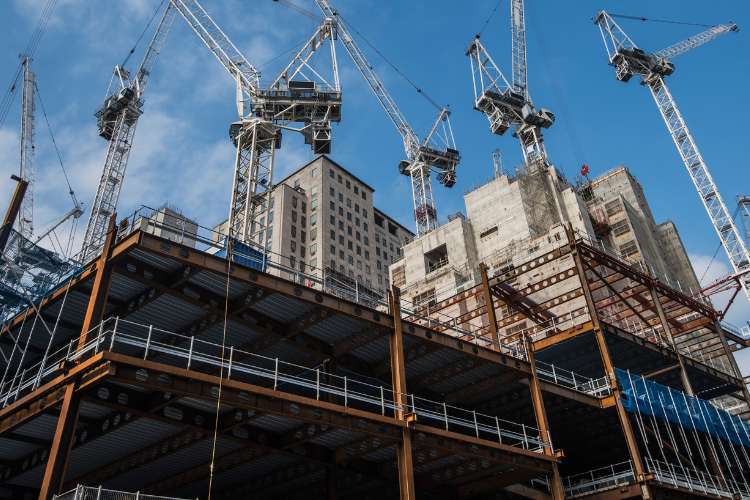Subcontractors frequently face delays due to shifting project timelines, putting them in a “hurry up and wait” scenario. They pay for the materials, secure the labor—then wait to begin work. This can create logistical problems, and can put a strain on cash flow.
Subcontractors pay for materials and labor but aren’t able to bill for their expenses until they begin work. For subcontractors who have multiple projects stall at the same time, they may find themselves unprepared when the project is finally ready for them.
Subs who want to be part of the solution—and more effectively manage their operations while project deadlines shift—can do so with a capital strategy that contains a diverse selection of working capital sources. In this article, we’ll discuss how managing cash flow using multiple sources of working capital can help keep project schedules on track.
Why Projects Stall
The phrase “time is money” could not be more true than it is in construction. Delays due to weather, other subs’ performance, change orders, or disputes can push back project timelines. For subcontractors, this unpredictability creates a challenging balancing act: They must be fully prepared to mobilize the moment a project is ready, but often don’t know exactly when that will be.
This level of readiness involves a lot of preparation and problem solving, including having the necessary capital in place before it’s needed.
The Financial Hurdles Subs Face in Waiting for Project Readiness
“If we’re waiting and waiting for a project to start, I have to have material ready to go. But I don’t want to wait and have a bunch of material on my credit line with our supplier and then have it sit there for three months because the project is pushed out,” said Dan Wascher, Chief Financial Officer at Majestic Kitchen and Bath.
Subcontractors may find themselves purchasing materials and then waiting weeks or months before work begins—an unfortunate reality that often can’t be avoided. These purchases can sometimes present an undue strain on cash flow, as these materials represent investments that can tie up capital before the business generates any revenue. This kind of strain makes it difficult to scale or stay financially healthy—unless subcontractors have built a flexible, proactive capital strategy that contains multiple sources of working capital.
Why A Capital Strategy Matters
Having a capital strategy that contains multiple sources of working capital makes it easier for subs to stay ready to begin a project when the time comes. With a diverse set of capital options in place, subs can pay suppliers upfront without having to tie up other forms of capital with material purchases. This not only allows subcontractors to use other forms of capital to cover labor and overhead, but also builds a stronger relationship with suppliers when subs are able to demonstrate a positive payment history. When subs experience a period of slower cash inflow, if they find other sources of working capital to cover material purchases rather than leaning on suppliers every time, it can keep the relationship strong.
“If I know it’s only going to take seven days for delivery, I can keep the supplier apprised and let them know at some point I’m going to pull the trigger and pay them immediately using another working capital source. And if they know that, they will hold the material,” Wascher said. “I look at the financial strategy from that point of view—it’s about the relationships.”
Preserving supplier relationships can have a huge impact on subs’ bottom lines, because many suppliers give preferential treatment, including better pricing, to certain customers. Subs can strengthen these relationships by building a strong capital strategy that allows them to use other financial resources besides their supplier terms. Bank lines of credit, credit cards, cash, and construction-specific financing are all important elements of a subcontractor’s capital stack, and this combination of solutions gives them the ability to stabilize their cash flow and protect supplier relationships.
How Financing Fits Into a Capital Strategy
Financing is an effective tool that can level out cash flow, improve financial stability and flexibility, and help businesses achieve their growth goals. However, financing has to be used strategically so that subcontractors don’t find themselves over-leveraged, which can hamstring efforts to grow, or even keep operations running smoothly amidst heavy cash flow demands.
Some subs shy away from financing entirely, believing it’s best to use cash as a “cost-free” option. But using cash actually comes with its own costs: opportunity costs. When cash is used to cover project expenses, it’s not available to fuel growth. Further, cash is often not enough to cover project expenses until payments come into the business. Bank lines of credit can help, but as they typically can cover only 2-10% of a subcontractor’s annual revenue, they may not offer the capacity to cover a funding gap. An effective capital strategy involves options that allow for both diversity and capacity, so that the business has the tools necessary to run efficiently, cover unexpected expenses, or take advantage of unforeseen opportunities.
Financing is a powerful tool when used to stabilize cash flow for activities that will show a greater return than the cost of servicing the debt. As subcontracting businesses grow and take on bigger projects with longer lead times, they’ll need access to increasing amounts of capital. Using financing responsibly and effectively can help increase borrowing capacity while leaving cash to fund growth opportunities. Used well, financing can be a lever for growth for a subcontracting business.
An effective working capital strategy that includes a variety of sources can be a strategic way to accelerate project timelines by enabling subcontractors to prepare for their turn on a project and remain flexible in the face of construction project delays. For more information on creating a capital strategy that serves as a foundation for long-term business growth, download our whitepaper.





